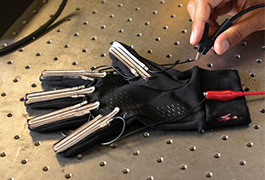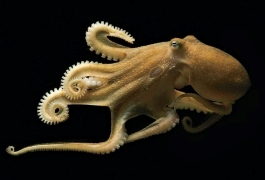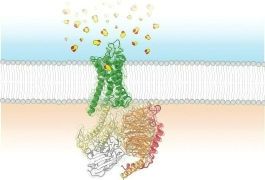Atomic News Roundup—May 2024
In this collection of research reported in ACS Axial and Chemical & Engineering News, we feature a new antibiotic, eco-friendly foam packaging, adhesive inspired by slug mucus, and discovery of brain preservation processes.
Pushing back on antibiotic resistance
In test tubes and in mice, a new antibiotic defeated several types of drug-resistant bacteria. The drug candidate, cresomycin, binds tightly to bacterial ribosomes and seems to overcome a common antimicrobial resistance tactic.
Designed by researchers at Harvard University and the University of Illinois at Chicago, cresomycin builds on the team’s work with clindamycin, an antibiotic that treats various types of infections, including skin and vaginal infections. The new antibiotic retained half of clindamycin’s structure, with the other half altered to fit more tightly with bacterial ribosomes to prevent protein synthesis. Informed by their studies on clindamycin, the team changed its other side to a conformationally limited macrocycle for even better binding, creating cresomycin.
Although most antibacterial research focuses on direct binding with the active site, the researchers found that cresomycin simply pushed the bacterial resistance fighters—methyl groups—right out of the way for a more secure fit to their mutual target—the bacterial ribosome. The antibiotic is now moving to preclinical studies.
Read the full article in C&EN: An antibiotic built for better binding
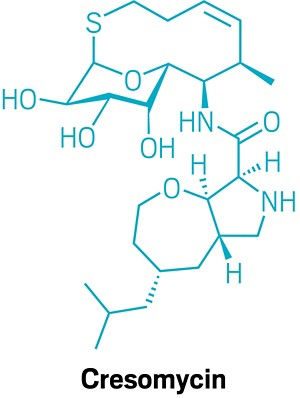
A new injectable could help diabetic patients experiencing blood sugar crashes by releasing a needed hormone
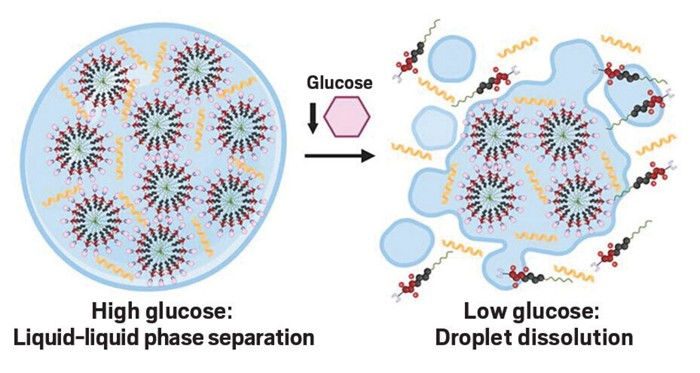
People with diabetes can be in life-threatening danger if their glucose level plummets. To prevent such complications, researchers at the University of Notre Dame are developing an injectable, responsive system that could restore balance to maintain a healthy sugar level.
Several other groups are working on injectable systems that detect when a person’s glucose level spikes and respond by releasing insulin. However, responding to drops requires detecting the absence of glucose.
The Notre Dame team sequestered the sugar-releasing hormone glucagon into injectable hydrogels and coacervates. Under appropriate glucose concentrations, the materials held onto the glucagon drug. When the concentration dipped too low, the storage mechanism broke up, releasing glucagon into the body.
The researchers tested the system on diabetic animals and saw a reduction in blood sugar crashes. More work is needed to prevent unwanted leaking and increase kinetic response times, but the researchers hope a combined response system could someday keep blood sugar in check, no matter which way it dysregulates.
Read the full article in C&EN: Injectable system responds when blood sugar drops low
Researchers give waste cardboard new life as eco-friendly foam packing

A new packing foam could offer companies a high-performing, environmentally friendly way to cushion goods for delivery—even in extreme circumstances.
Plastic polymer foam is a go-to material for protecting items during transport, but it’s petroleum-based and nonbiodegradable. A team from Beijing Forestry University in China prepared the new foam using waste cardboard, polyvinyl alcohol (PVA), and gelatin. The low-density material is highly porous and displays a unique linking structure. That structure translates to high levels of energy absorption and thermal insulation, a hard-to-strike balance in cushioning.
When the researchers impregnated their foam with a shear-thickening fluid that hardened on impact, the material absorbed ultrahigh amounts of energy. This suggests that the foam could protect items even during extreme deliveries, such as during parachute-free aid drops.
Read the full article in ACS Axial: Upcycling Cardboard into Greener Foam Packaging
How nature preserves human brains
Brain tissue usually decomposes quickly, but many brains have been found intact after hundreds or thousands of years. After reviewing 400 years of anthropology literature, University of Oxford researchers identified five common preservation processes, including an unknown mechanism responsible for the longest timescales—2,000 years or even longer.
The team examined exposure conditions for more than 4,400 preserved brains from the literature. They found that freezing brains resulted in the lowest longevity (around 500 years), followed by tanning, dehydration, and saponification.
An unidentified process is responsible for preserving the oldest brains, even after all the other soft tissue has decomposed. The team hypothesizes that the one-to-one ratio of proteins to lipids in the brain, along with a nearly complete absence of carbohydrates and a high concentration of iron, results in molecular cross-linking that preserves the tissue.
Read the full article in C&EN: Why some human brains don’t break down after thousands of years
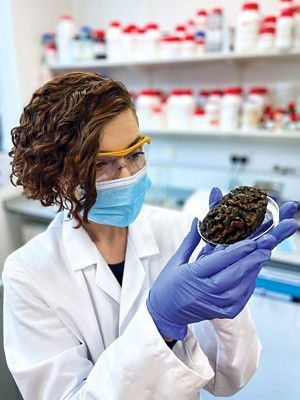
Adhesive inspired by slug mucus could prevent cerebrospinal fluid leaks after surgery
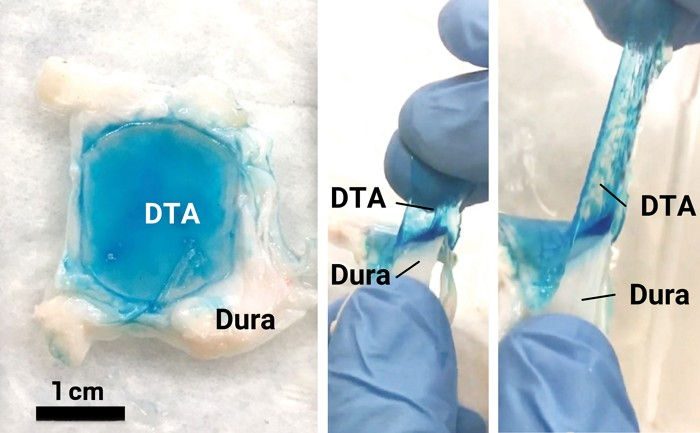
Neurosurgeons often need to incise the membrane surrounding a patient’s spinal cord and brain. If the incision isn’t watertight after surgery, cerebrospinal fluid can leak through and cause serious complications. A tough, two-part adhesive inspired by slug mucus could offer a longer-lasting and more durable seal than the sutures and surgical glue used today.
Developed at Harvard University, the adhesive combines a stretchy but tough hydrogel made of two crosslinked polymers with a sugary chitosan solution. When applied to tissue, the solution permeates the tissue and hydrogel and ties the molecules together tightly.
The new adhesive was more resistant to the stretching and compression of wet tissue than surgical glues. Additionally, a study in pigs showed that the new adhesive could withstand a significantly higher fluid pressure than commercial surgical glue. The researchers say the adhesive alone could potentially outperform the combination of sutures and conventional glue.
Read the full article in C&EN: Tough adhesive could aid in neurosurgery


